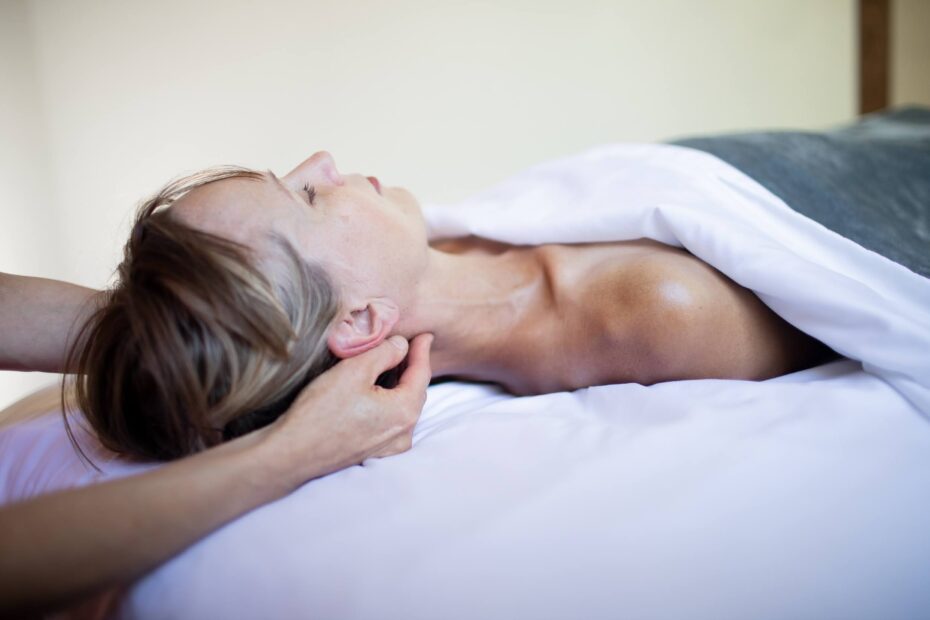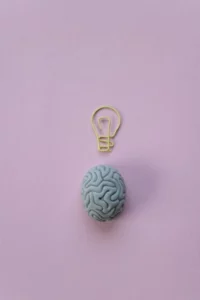Carol Bell, a licensed massage therapist, offers bodywork therapy at Table Health. In addition to various types of bodywork modalities including massage, trigger point therapy, active isolated stretching, and visceral manipulation, Bell offers Craniosacral therapy (CST).
Depending on the approach she uses, bodywork can help relieve pain in the body, reduce stress, anxiety or depression, and can even improve function of digestion, circulation, and nerve conduction. It can also just be enjoyed for fun!
“Sometimes it is nice to have a relaxing session that allows you to enjoy some downtime,” says Bell.
Recently we caught up with Bell to learn more about her background and experience in bodywork. Read below as she shares more about her approach and specifically how the quiet, gentle practice of CST can relieve fascial restrictions that prevent normal movement of the joints, muscles, ligaments, organs, nerves and vessels.
But, first, before we get into CST, let’s break down a few common bodywork modalities.
Craniosacral Therapy (CST) is a gentle, hands-on approach to evaluating and enhancing the craniosacral system – which is comprised of the membranes and cerebrospinal fluid that surround and protect the brain and spinal cord. CST aims to release tensions deep in the body to help reduce pain, relieve dysfunction, and improve whole-body health and performance. By facilitating the body’s natural and innate healing processes, CST is increasingly used as a preventive healthcare measure for its ability to bolster resistance to disease.
Visceral Manipulation (VM) was developed by renowned French Osteopath and Physical Therapist, Jean-Pierre Barral. Through organ-specific fascial mobilization, VM assists functional and structural imbalances throughout the body including musculoskeletal, vascular, nervous, urogenital, respiratory, digestive and lymphatic dysfunction. It evaluates and treats the dynamics of motion and suspension in relation to organs, membranes, fascia, and ligaments. VM increases proprioceptive communication within the body, thereby revitalizing a person and relieving symptoms of pain, dysfunction, and poor posture.
The Active Isolated Stretching (AIS) method of muscle lengthening and fascial release is a type of Athletic Stretching Technique that provides effective, dynamic, facilitated stretching of major muscle groups, but more importantly, AIS provides functional and physiological restoration of superficial and deep fascial planes.
Trigger Point Therapy is a massage technique of relieving chronic pain and improving postural distortions through a process of applying pressure to specific tender points in a muscle, tendon, ligament or fascia. This is followed with massaging the muscle along the longitudinal fibers to improve the circulation and then stretching to re-educate the muscle as to a proper length and muscle fiber orientation. This promotes more optimal circulation and motor function and a removal of waste products. A trigger point is a highly irritated area of a muscle that refers pain or sensations to other tissues or areas of the body. The goal is to “erase” these points and restore function.
What is Craniosacral Therapy and what does it feel like?
CST is a quiet, gentle type of touch that uses the skin and bones as handles into the fascial system (Fascia is a thin casing of connective tissue that surrounds and holds every organ, blood vessel, bone, nerve fiber and muscle in place) of the body.
The practitioner places her hands on an area of restriction. She senses tissue movement initiated by the client’s body, follows it into the direction it leads and holds it gently until a release is felt. Releases may be sensed by the client as heat, tingling, relaxation, pressure, exhaling the breath or they may fall asleep and not notice these changes at all. Each client and each session is different.
What is craniosacral therapy used to treat?
CST relieves fascial restrictions that prevent normal movement of the joints, muscles, ligaments, organs, nerves and vessels. When tissues, organs and structures cannot move in an optimal manner, their function is compromised.
While anyone may benefit from this approach, it is commonly sought out for treatment of injuries, chronic pain, headaches, fascial restrictions from scar tissue or past trauma, or concerns with respiratory, digestive, neurological or immune system dysfunction.
What are some of the benefits of Craniosacral Therapy?
The first benefit that many people notice is an awareness of the connectivity of all the systems of the body. Often someone will comment during a session that they will feel sensations in areas distant from what is being touched such as: “I feel you touching my head but I’m noticing shifting in my lower back.”
CST seeks to help relax tension around areas that create restrictions – and this may or may not be near an area of pain or dysfunction. Examples: headaches created from abdominal surgeries; neck pain created from an old knee injury; poor digestion created from restrictions in breathing patterns.
When the restrictions are released, the body can make changes to the physiology easier. CST helps the body make its own corrections.
What can I expect from Craniosacral therapy? What happens in a Craniosacral session?
For the first few minutes, a practitioner will gather appropriate information about a client’s body by using “listening” techniques with the hands. Restrictions in tissue movement, sensations of tension, heat or cold, body posture, and breathing patterns are evaluated. Walking, standing, seated or range of motion evaluations may also be used.
Treatments are performed with a client wearing loose, comfortable clothing while lying down. Once the areas of restriction are determined, they are prioritized from most to least important.
Restrictions are released by mobilizing the fascia with a quiet, gentle pressure placed on the tissues. Sometimes gentle movement, massage techniques, visualization, breathing changes or verbal dialogue can help with the process. Each session is different and each client is unique as to what is needed.
Bell, a 1994 graduate from Irene’s Myomassology Institute where she completed the advanced training program in 2001, has been a massage instructor at IMI from 1996-2002. An avid learner, Bell has sough continued education in craniosacral therapy through the Upledger Institute since 1996 and in Visceral Manipulation through the Barral Institute since 2018.
Schedule a Bodywork Session with Carol Bell
You can schedule a bodywork session with Carol Bell via an a la carte, individual appointment. Another option for regular bodywork sessions is to sign-up for a Wellness Membership, which in addition to other benefits offers a monthly wellness session.

